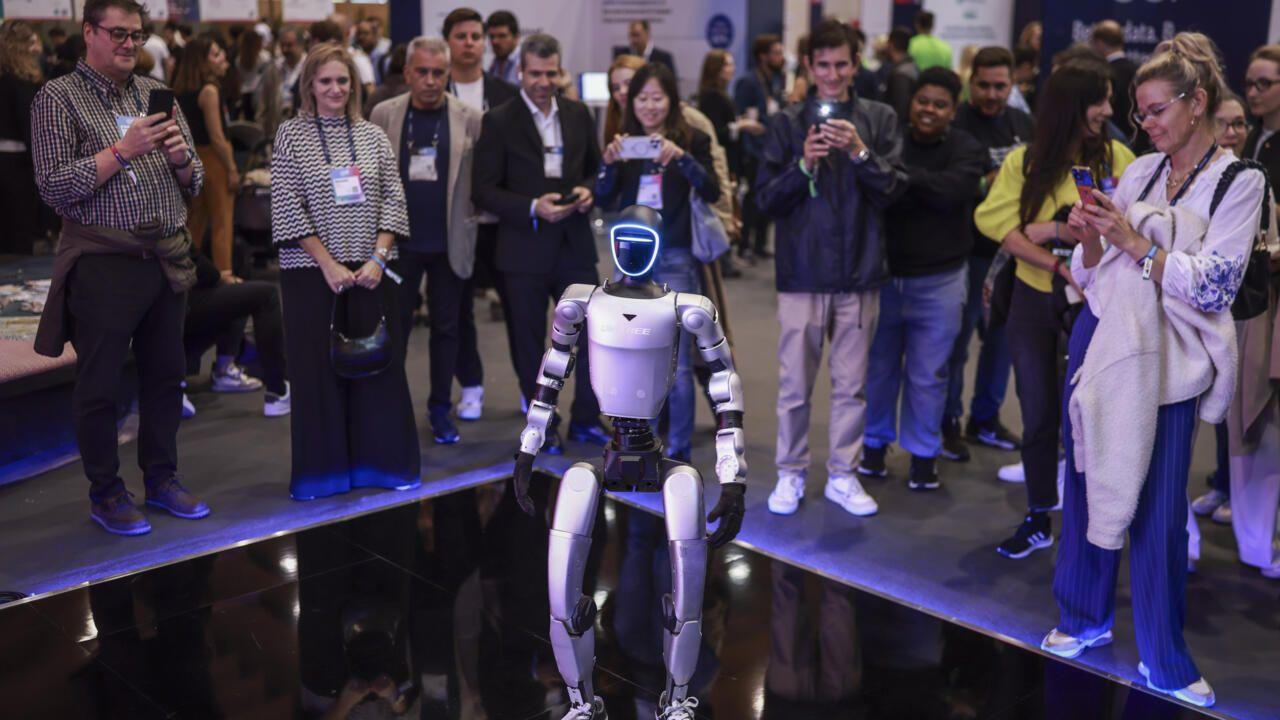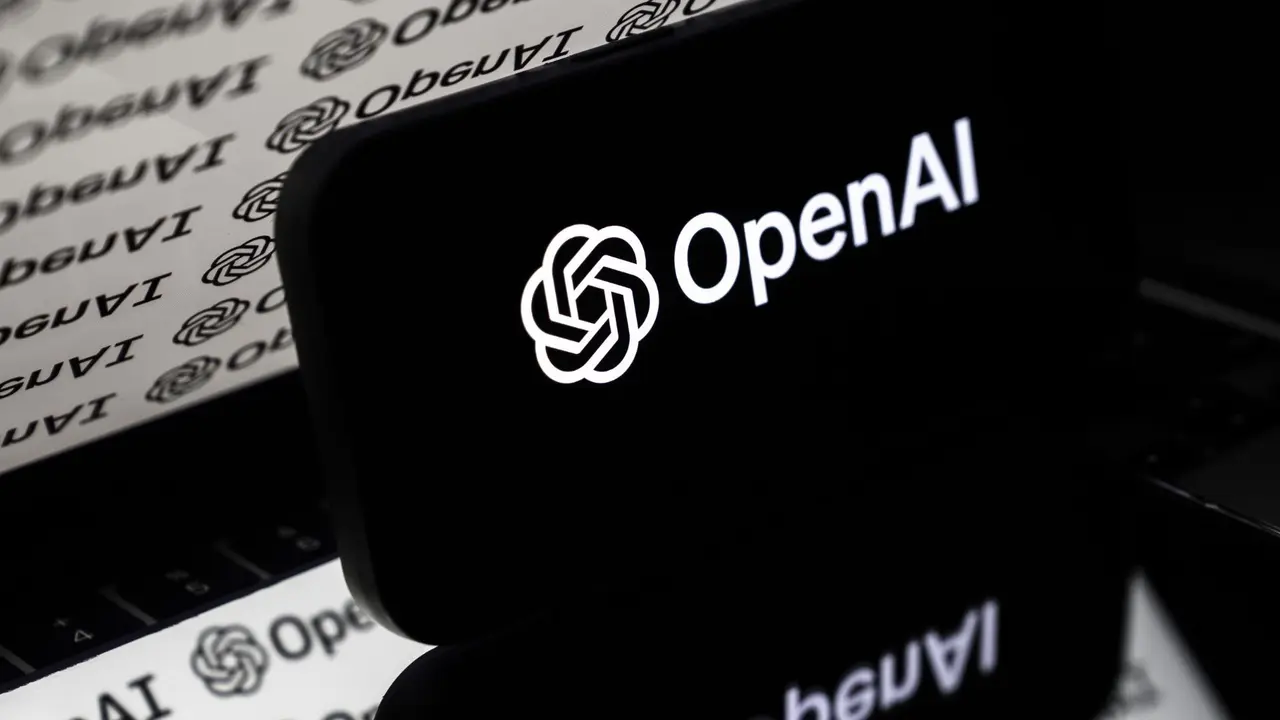Amazon's Chief Roboticist Questions Humanoid Robot Hype, Advocates Function Over Form
2 Sources
2 Sources
[1]
Amazon robotics lead casts doubt on eye-catching humanoids
Lisbon (AFP) - Flashy humanoid robots that have awed attendees at Web Summit in Lisbon this week are still far from revolutionising physical labour in factories and warehouses, Amazon's chief roboticist told AFP. "It's a bit of doing technology for technology's sake," Tye Brady said in a Wednesday interview. "Whenever we think about robotics, we think about, A, what's the problem we're trying to solve? And, B, then function. From function, we derive form. And it kind of gets it backwards if you start with form." Breakdancing androids from Chinese manufacturer Unitree were cited by Web Summit organiser Paddy Cosgrave as he declared that "the era of Western tech dominance is fading" on Monday. Brady, by contrast, pointed to the more than one million robots already deployed by Amazon in its e-commerce operations. These range from arms for picking and sorting items to wheeled haulers that carry heavy loads around warehouse spaces -- sensing and avoiding human workers as they go. Amazon's fleet compares with around two million industrial robots in service across the whole Chinese economy in 2024 and more than 4.5 million worldwide, according to a September report from the International Federation of Robotics. The company also boasts of the ecosystem and supply chain it has built up in Massachusetts for developing and building its robots within US borders. Brady said that the world is still "in the early stages of robotics, of physical AI". But "there is no such thing as 100 percent automation," he added, saying that Amazon's machines are designed "to provide utility and augmentation to people" and "eliminate the menial, the mundane, and the repetitive" from human work. Sense of touch Brady acknowledged that elements of the humanoid form might prove useful -- such as bipedal locomotion for "uneven terrain or the ability to go up and down stairs". But as exciting as robots getting around on two legs may be, their value is determined by the tasks they are able to perform when they reach their destination. "I can move to wherever... but once you get there, there's probably a task that you need to do. And that task is going to now involve some sort of sense of touch, some sort of manipulation," Brady said. The rush to bring humanoid robots to market has led some firms to race ahead of the technology. California startup 1X last month drew both excitement and derision by offering a home help android for pre-order at $20,000 -- including an "expert mode" operated remotely by a human for complex tasks. Brady said that work is still needed before robots are able to interact with the whole range of objects they might encounter in the environment. Announced earlier this year, Amazon's Vulcan robot -- which sports sensing technology allowing it to avoid damaging items it is gripping or nudging aside -- is able to pick and stow around 75 percent of items the giant web store offers. But the system is for now a large floor-mounted assembly, rather than a lithe humanoid. Looking to the future, "if you start to combine... aptitude in mobility and manipulation, and free yourself from form and focus more on the function, that's actually going to be really great," Brady said.
[2]
Amazon robotics lead casts doubt on eye-catching humanoids
Lisbon, Portugal -- Flashy humanoid robots that have awed attendees at Web Summit in Lisbon this week are still far from revolutionizing physical labour in factories and warehouses, Amazon's chief roboticist told AFP. "It's a bit of doing technology for technology's sake," Tye Brady said in a Wednesday interview. "Whenever we think about robotics, we think about, A, what's the problem we're trying to solve? And, B, then function. From function, we derive form. And it kind of gets it backwards if you start with form." Breakdancing androids from Chinese manufacturer Unitree were cited by Web Summit organizer Paddy Cosgrave as he declared that "the era of Western tech dominance is fading" on Monday. Brady, by contrast, pointed to the more than one million robots already deployed by Amazon in its e-commerce operations. These range from arms for picking and sorting items to wheeled haulers that carry heavy loads around warehouse spaces -- sensing and avoiding human workers as they go. Amazon's fleet compares with around two million industrial robots in service across the whole Chinese economy in 2024 and more than 4.5 million worldwide, according to a September report from the International Federation of Robotics. The company also boasts of the ecosystem and supply chain it has built up in Massachusetts for developing and building its robots within US borders. Brady said that the world is still "in the early stages of robotics, of physical AI". But "there is no such thing as 100 percent automation," he added, saying that Amazon's machines are designed "to provide utility and augmentation to people" and "eliminate the menial, the mundane, and the repetitive" from human work. Brady acknowledged that elements of the humanoid form might prove useful -- such as bipedal locomotion for "uneven terrain or the ability to go up and down stairs." But as exciting as robots getting around on two legs may be, their value is determined by the tasks they are able to perform when they reach their destination. "I can move to wherever... but once you get there, there's probably a task that you need to do. And that task is going to now involve some sort of sense of touch, some sort of manipulation," Brady said. The rush to bring humanoid robots to market has led some firms to race ahead of the technology. California startup 1X last month drew both excitement and derision by offering a home help android for pre-order at US$20,000 -- including an "expert mode" operated remotely by a human for complex tasks. Brady said that work is still needed before robots are able to interact with the whole range of objects they might encounter in the environment. Announced earlier this year, Amazon's Vulcan robot -- which sports sensing technology allowing it to avoid damaging items it is gripping or nudging aside -- is able to pick and stow around 75 percent of items the giant web store offers. But the system is for now a large floor-mounted assembly, rather than a lithe humanoid. Looking to the future, "if you start to combine... aptitude in mobility and manipulation, and free yourself from form and focus more on the function, that's actually going to be really great," Brady said.
Share
Share
Copy Link
Amazon's robotics leader Tye Brady challenges the current humanoid robot trend at Web Summit, arguing that practical functionality should drive design rather than flashy human-like appearances. He emphasizes Amazon's proven track record with over one million deployed robots focused on solving specific warehouse problems.
Amazon Executive Questions Humanoid Robot Revolution
At this week's Web Summit in Lisbon, Amazon's chief roboticist Tye Brady delivered a sobering assessment of the current humanoid robot trend, suggesting that flashy demonstrations may be prioritizing spectacle over substance. Speaking to AFP, Brady characterized much of the humanoid robot development as "doing technology for technology's sake"
1
.Brady's comments came in response to the attention generated by breakdancing androids from Chinese manufacturer Unitree, which Web Summit organizer Paddy Cosgrave highlighted as evidence that "the era of Western tech dominance is fading"
1
.
Source: France 24
The Amazon executive emphasized his company's problem-first approach: "Whenever we think about robotics, we think about, A, what's the problem we're trying to solve? And, B, then function. From function, we derive form"
2
.Amazon's Practical Robotics Deployment
While humanoid robots capture headlines, Amazon has quietly built one of the world's largest operational robot fleets. The company currently deploys more than one million robots across its e-commerce operations, ranging from picking and sorting arms to wheeled haulers that navigate warehouse spaces while sensing and avoiding human workers
1
.This deployment scale puts Amazon's robot fleet in perspective against global industrial robotics adoption. According to a September report from the International Federation of Robotics, China's entire economy operates around two million industrial robots in 2024, while the worldwide total exceeds 4.5 million
2
. Amazon has also established a complete ecosystem and supply chain in Massachusetts for developing and manufacturing its robots domestically.Technical Challenges in Humanoid Design
Brady acknowledged that certain aspects of humanoid design could prove valuable, particularly bipedal locomotion for navigating "uneven terrain or the ability to go up and down stairs"
1
. However, he emphasized that mobility alone doesn't justify the humanoid approach, noting that robots must perform meaningful tasks once they reach their destination."I can move to wherever... but once you get there, there's probably a task that you need to do. And that task is going to now involve some sort of sense of touch, some sort of manipulation," Brady explained
2
. This manipulation challenge represents a significant technical hurdle that current humanoid designs haven't adequately addressed.Related Stories
Market Reality vs. Technology Readiness
The rush to commercialize humanoid robots has led some companies to outpace technological capabilities. California startup 1X recently offered a home assistance android for pre-order at $20,000, including an "expert mode" where human operators remotely control the robot for complex tasks
1
. This approach highlights the gap between marketing promises and current technical reality.Amazon's own advanced systems illustrate these limitations. The company's Vulcan robot, announced earlier this year, incorporates sophisticated sensing technology to avoid damaging items during handling. Despite this advanced capability, Vulcan can successfully pick and stow only 75 percent of items in Amazon's vast catalog
2
. Notably, Vulcan operates as a large floor-mounted assembly rather than a mobile humanoid form.Future Vision and Human-Robot Collaboration
Brady positioned the current state as the "early stages of robotics, of physical AI" while maintaining that complete automation remains impossible
1
. Amazon's philosophy centers on human augmentation rather than replacement, designing machines "to provide utility and augmentation to people" and "eliminate the menial, the mundane, and the repetitive" from human work.Looking ahead, Brady suggested that combining mobility and manipulation capabilities while maintaining focus on function over form could yield significant breakthroughs. This approach prioritizes solving real-world problems rather than creating visually impressive demonstrations, reflecting Amazon's practical engineering philosophy in an industry increasingly drawn to spectacular showcases.
References
Summarized by
Navi
Related Stories
Recent Highlights
1
AI Chatbots Sway Voters More Effectively Than Traditional Political Ads, New Studies Reveal
Science and Research

2
Trump signs executive order to override state AI laws despite bipartisan pushback
Policy and Regulation

3
OpenAI warns upcoming AI models will likely pose high cybersecurity risk with zero-day exploits
Technology








